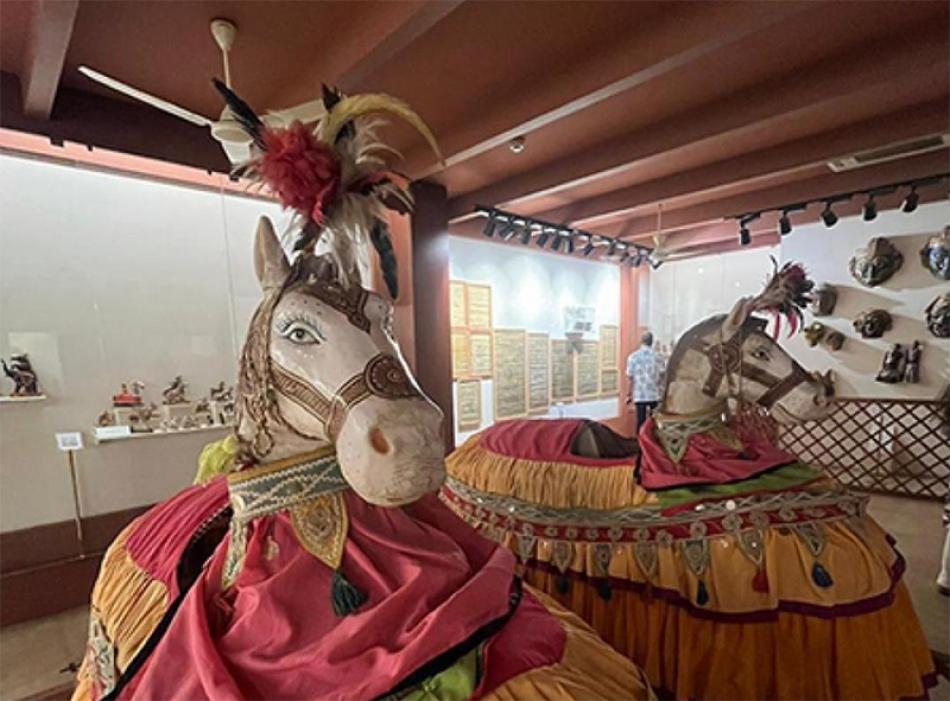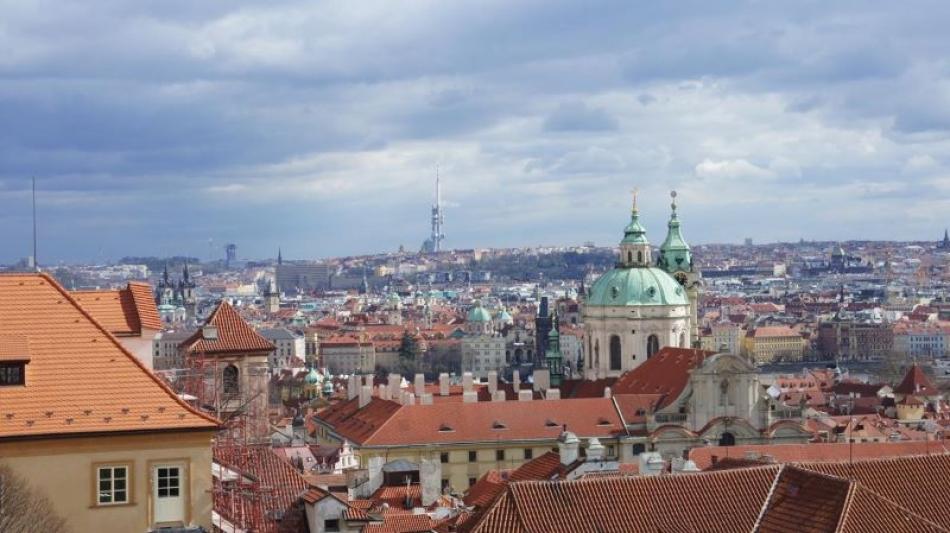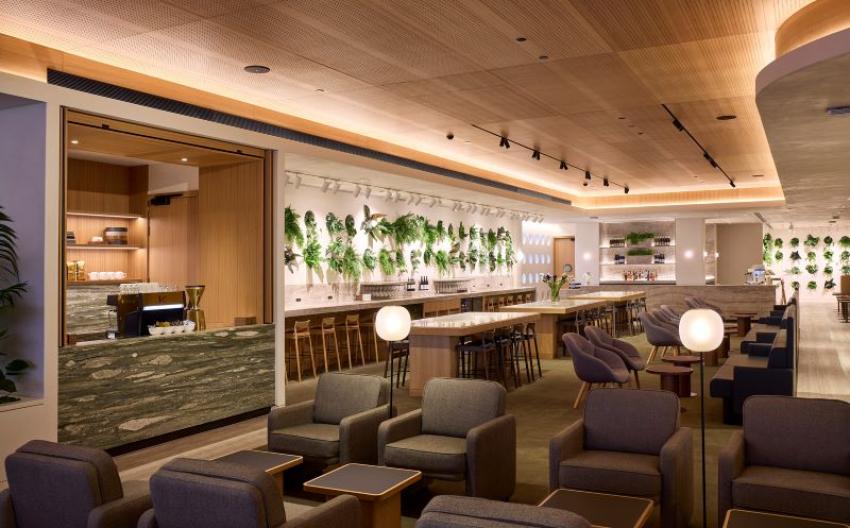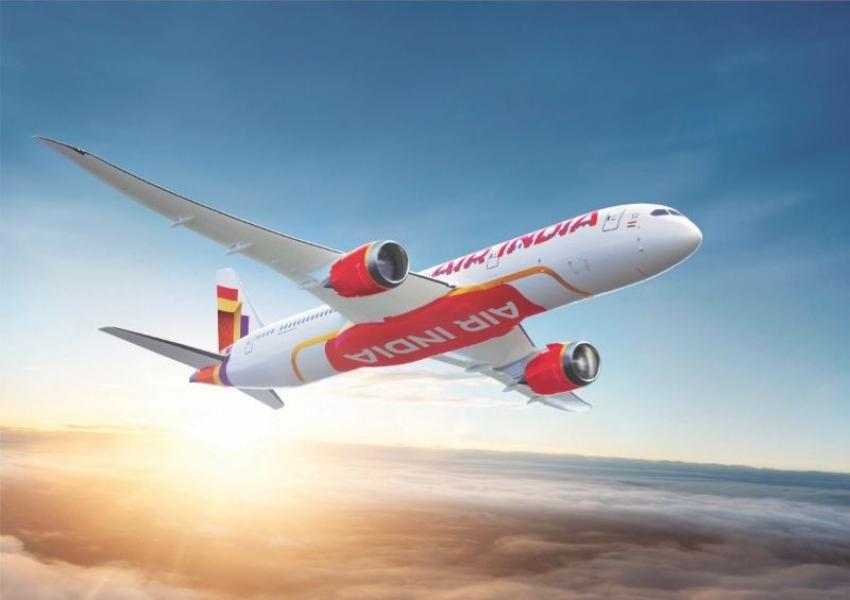By Sanchita Guha | @notintownlive | 14 Feb 2025, 01:54 am
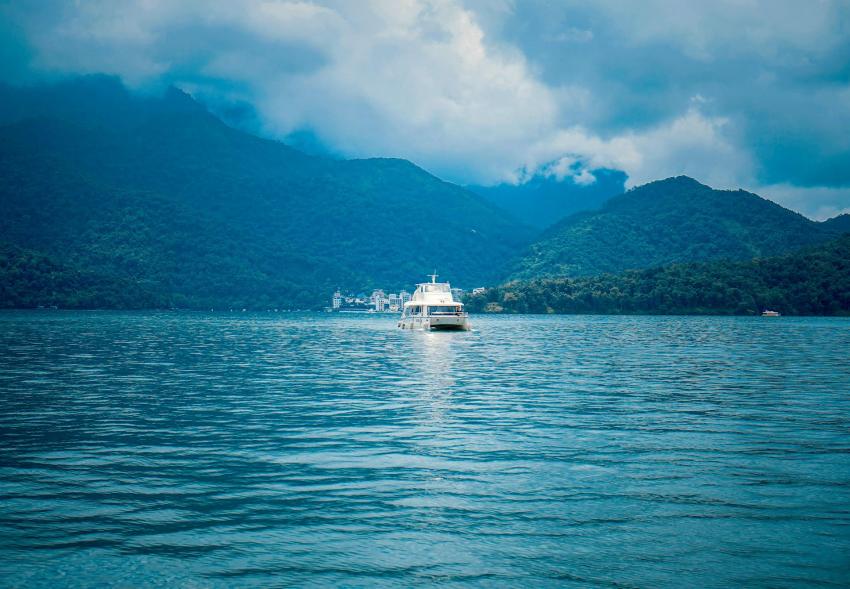
Sun Moon Lake is a stunningly beautiful alpine lake located in the middle of Taiwan.Photo courtesy: Lisanto/Unsplash
In the geopolitical tug-of-war between Mainland China and the smaller landmasses around it, Taiwan stands out like no other. This tiny island — some six Taiwans could fit into the large north Indian state of Uttar Pradesh — found its independent voice following the 1949 civil war between the Nationalists led by General Chiang Kai-shek and the Communists led by Mao Zedong.
The Communist win in the civil war saw the establishment of the “People’s Republic of China” by Chairman Mao, whereas General Chiang Kai-shek and a large number of his followers retreated to Taiwan, which called itself the “Republic of China”, marking the political separation.
This historical context has given Taiwan its identity — an advanced, high-skilled, open-minded nation, and a top player in the global electronics sector that also retains the original riches of its Chinese cultural elements.
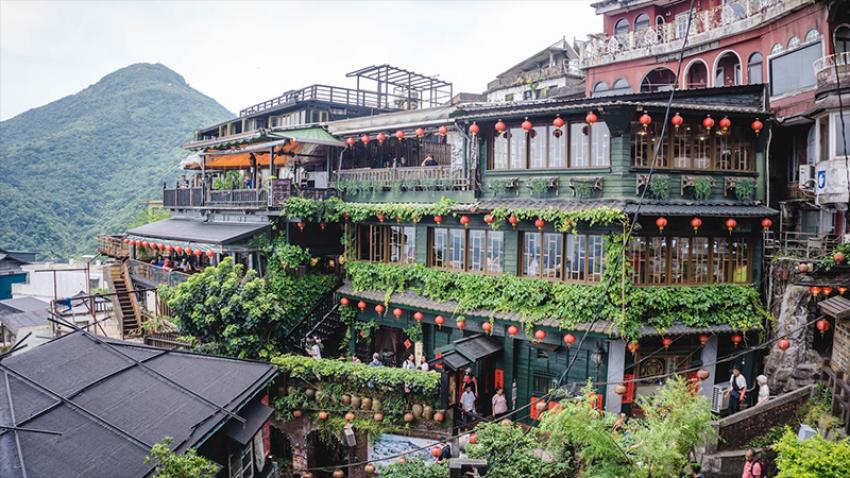 Above: A Taiwan house with its distinct architecture. Below: A temple in Kaohsiung. Photo Courtesy: Unsplash
Above: A Taiwan house with its distinct architecture. Below: A temple in Kaohsiung. Photo Courtesy: Unsplash
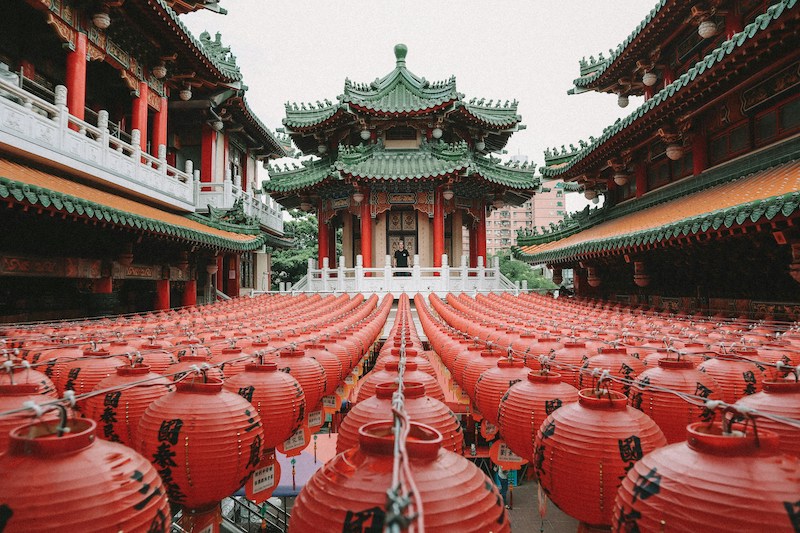
Our visit to Taiwan brought us in touch with both of these aspects: the ultra-modern and the centuries-old.
On one hand, there is the High-Speed Rail, connecting the north and the south of Taiwan — its top speed is very close to that of the famed Japanese shinkansen (bullet train) — and the vast techlands of Electronic City in the national capital Taipei.
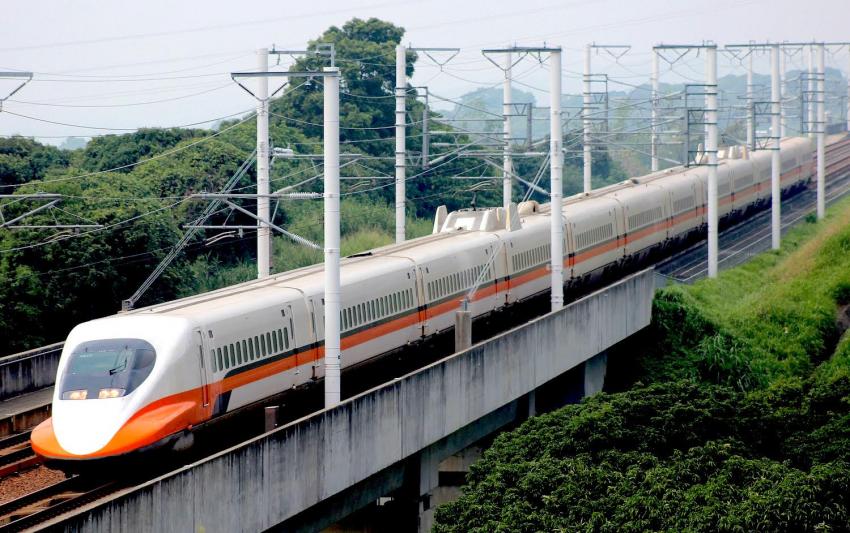 Taiwan High-Speed Train. Photo courtesy: Wikipedia Creative Commons
Taiwan High-Speed Train. Photo courtesy: Wikipedia Creative Commons
On the other hand, there are the hundreds of thousands of exhibits in the National Palace Museum in Taipei, taking a visitor through the fascinating history of Chinese script, the gradual sophistication of Chinese porcelain, and the country’s glorious jade art.
.jpg)
Between the cities, there are endless tracts of greenery along the highways — framed by faraway mountains — that prove this island nation values its ecological wealth. It has not allowed ‘development’ to turn everything into a dismal grey.
Indeed, our trip began in one of the most colourful districts of Taiwan, the artistic little Rainbow Village in the city of Taichung. About two hours’ drive from Taoyuan International Airport in Taipei, this vibrant Rainbow Village also has its roots in the 1949 civil war. Initially a settlement for the Nationalist soldiers and their families who moved to Taiwan with General Chiang Kai-shek, the village served only a residential purpose.
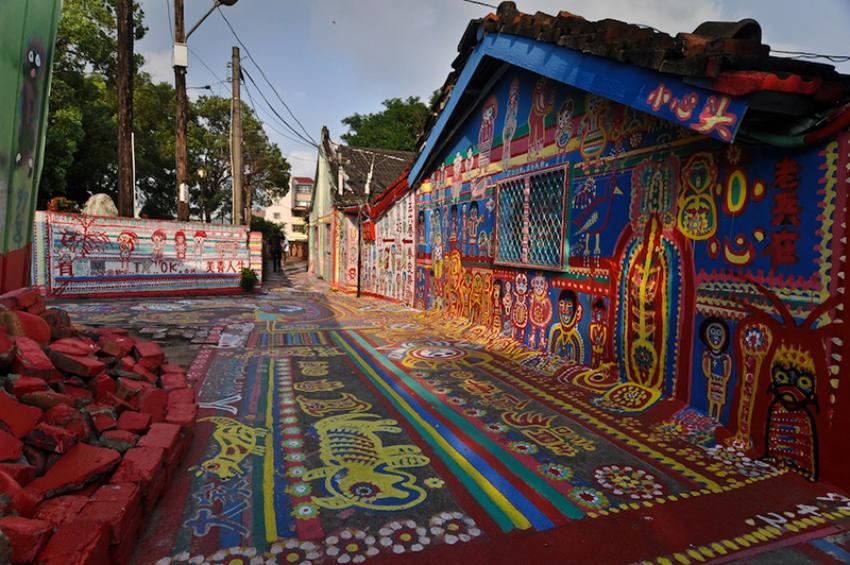 Rainbow village in Taichung. Photo courtesy: Wikipedia and Sanchita Guha
Rainbow village in Taichung. Photo courtesy: Wikipedia and Sanchita Guha
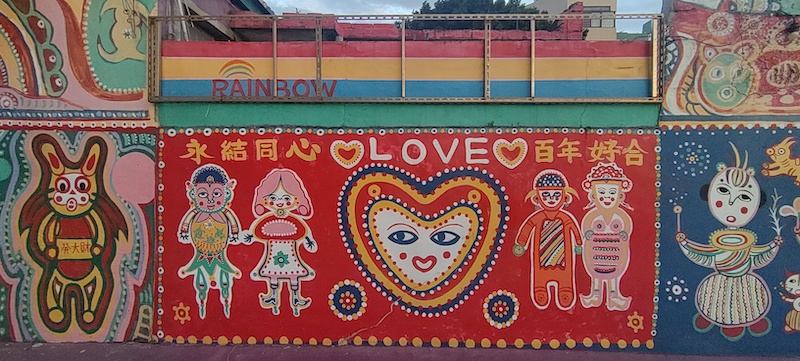
As the progeny of the original settlers began moving away, the military dependents’ village became desolate and fell into disrepair. One of those original settlers, named Huang Yung-Fu, took up the paintbrush to give the village houses a new look. What was at first a one-man endeavour took on a life of its own, when art students discovered Huang’s work and spread the word.
Rainbow Village now hums with visitors, whose cameras go clickety-click at the huge sweeps of colours on the ground and the kaleidoscope of flora and fauna painted on the walls. The paintings are refreshed at regular intervals by art students, making the village one of the must-visit spots in Taichung.
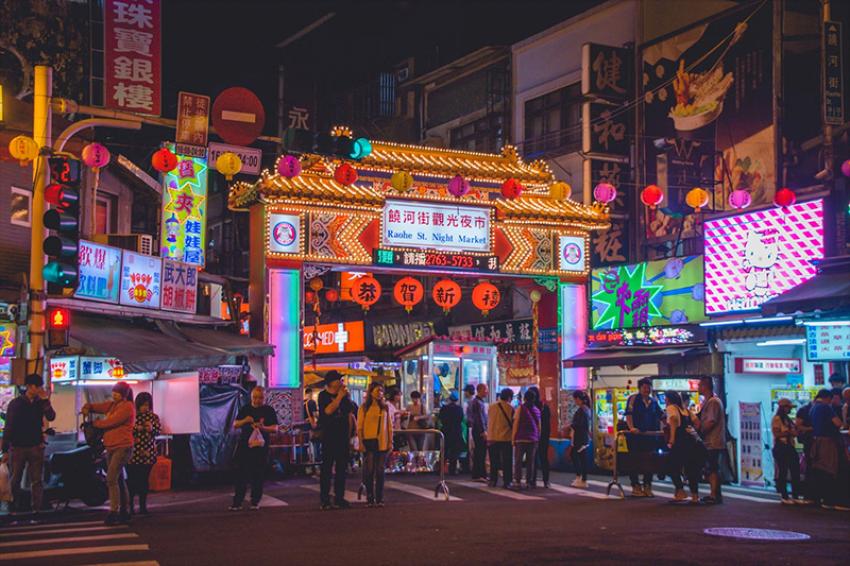 A night market in Taiwan. Photo Courtesy: Unsplash
A night market in Taiwan. Photo Courtesy: Unsplash
That’s a new way of having tea!
Following our night stay at the Taichung Dayi Laoye Travel, with cool geometric-design rooms, and a scrumptious dinner at Mayur Indian Kitchen, probably one of the best in Taiwan, our tour bus headed for Nantou County.
A large county almost at the centre of the island, Nantou has a range of unique experiences for visitors, and ours began with a cup of tea!
Before picking up the cup, we began our toil at the tea bushes in Tan Jia Lang Tea Garden. Such hard work it was — plucking a few perfect tea leaves to put in our tea-picker bags, and then taking half-a-dozen selfies to get the perfect shot. Drinking the oolong tea cultivated at Tan Jia Lang Tea Garden is literally a memorable occasion — the garden gives guests a small glass tube to make a “memory jar” of tea leaves, finished with a paper on which the guest writes a line and then puts the Tan Jia Lang stamp on it.
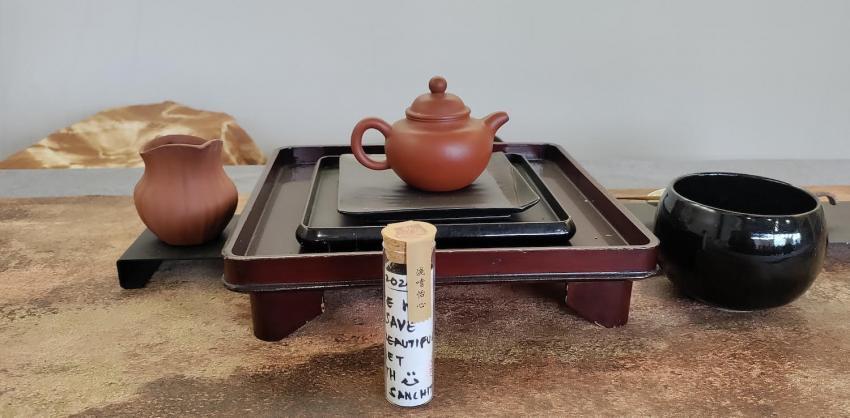 Memory jar at Tan Jia Lang. Photo courtesy: Sanchita Guha
Memory jar at Tan Jia Lang. Photo courtesy: Sanchita Guha
The next round of the Nantou tea tour took us to the Songboling Tea Culture Center for the “Six Senses of Tea Experience”. We know that coffee is a break and tea is a ceremony, but nothing prepares one for the amazing tea spa at Songboling; this is next-level rejuvenation — along with the familiar five senses, tea time here also activates our sixth sense: mindful consciousness.
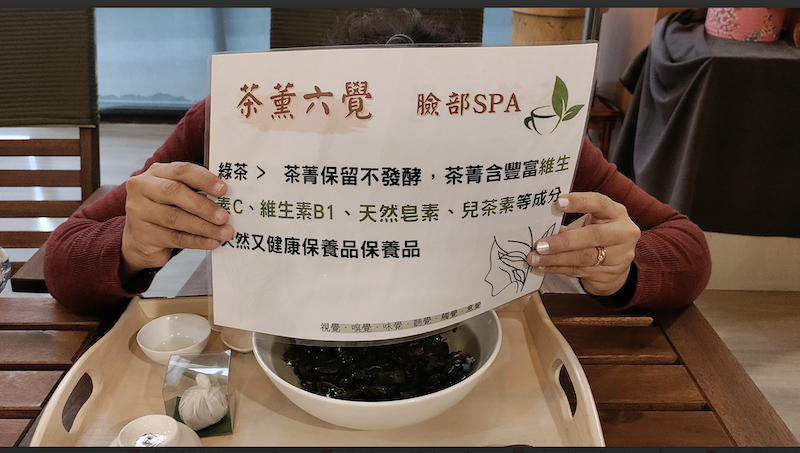
Journey into the “heart of Taiwan”
Staying close to nature, our next stop was the Barefoot Elf Landscape Restaurant for lunch, where artisanal breads, risotto with farm fresh mushrooms, a wonderful pumpkin soup, and interesting hotpots made for a lovely meal time. A bird-watching trail outside this restaurant offered a wide vista of a distant town.
Our post-lunch journey had a brief stop at the Jiji Wuchang Temple, where the original earthquake-hit temple has been preserved alongside a magnificent new one. This is a temple dedicated to Taoism, the indigenous religion of China, not to be mistaken for Buddhism.
From here, we headed for the place described as the “heart of Taiwan” — the stunning Sun Moon Lake. No visit to Taiwan can be anywhere near complete without a boat ride across this beautiful lake, a stroll along the lakeshore, and a Sun Moon Lake Ropeway ride to the Formosan Aboriginal Cultural Village, a sprawling park that recreates tribal homes and societal practices from another era.
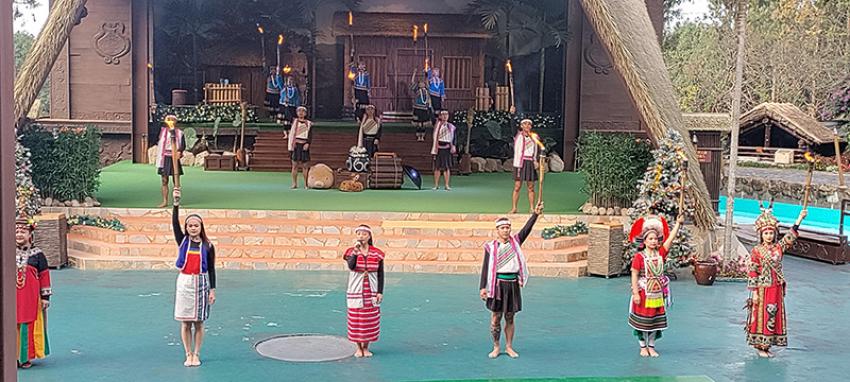 Formosan Village tribal culture show. Photo courtesy: Sanchita Guha
Formosan Village tribal culture show. Photo courtesy: Sanchita Guha
At one corner of the lake, visible from the boat, is a small pavilion where General Chiang Kai-chek would sit and contemplate the reunification of China, a day that never came for him.
Climbing a few stairs going up from the lakefront also takes one to the Xuanguang Temple, a shrine to a Buddhist monk who once travelled to India. This is as much a scenic spot as a spiritual one.
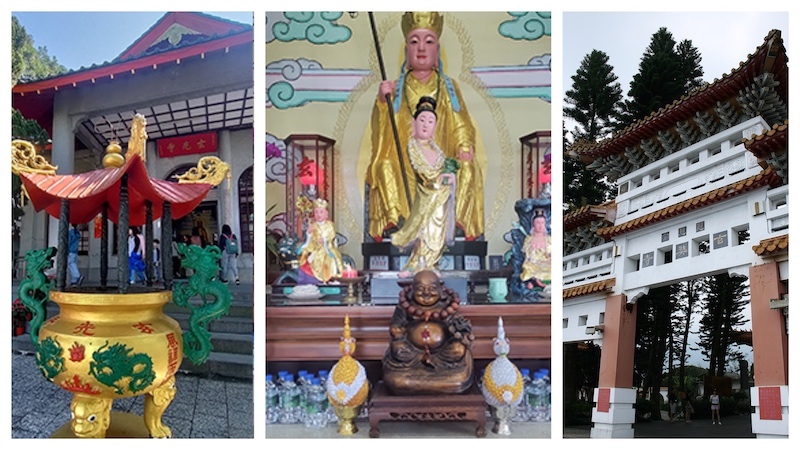
Clean, green and sparsely populated Taiwan is full of romantic places, and Sun Moon Lake easily takes the crown. The lakeshore is dotted with hotels whose upper-floor balconies give guests a 180-degree view of the lake and the surrounding mountains — the best way to spend a relaxing morning.
Our hotel, the Wyndham Sun Moon Lake, is a spanking new property within a 2-minute walk from the lake. While some of the rooms here do have nice views of Sun Moon Lake, the real charm of this Wyndham hotel is inside the rooms — or rather, in the bathrooms. Deep plunge bathtubs filled up with water from the nearby hot springs are an instant pick-me-up for the pleasantly maxed out traveller. My bathroom even had an additional kiddie pool version of the bathtub, finished with a cheerful rubber duckie.
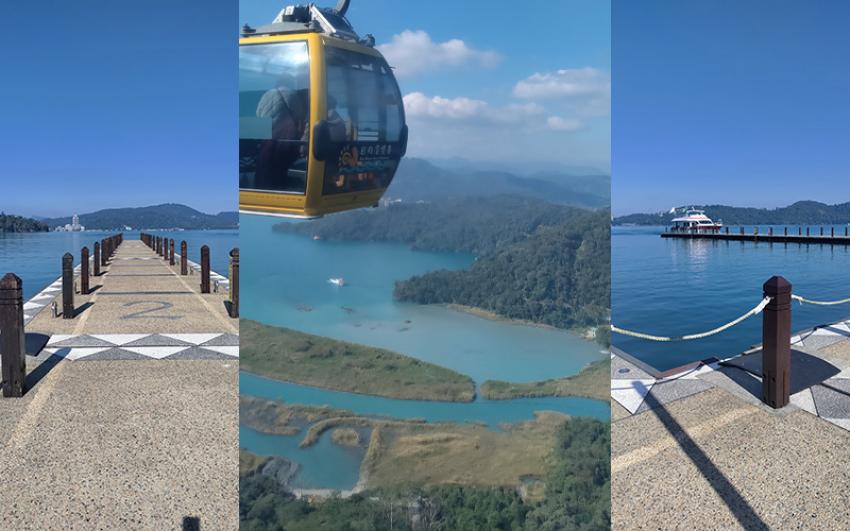 Sun Moon Lake. Photo courtesy: Sanchita Guha
Sun Moon Lake. Photo courtesy: Sanchita Guha
Our finale to the fantastically romantic experience of Nantou County was at the Tai-Yi Red Maple Resort aka Tai-Yi Ecological Leisure Farm near Puli township. This is a resort bursting with photogenic spots where you can pop the question, and exchange the vows, and then enjoy the feast, all within the boundaries of this extraordinary property. We learned leaf painting and created our personalised souvenir bags; and then ate some flower salad — you read that right — as part of a dinner made with organic produce.
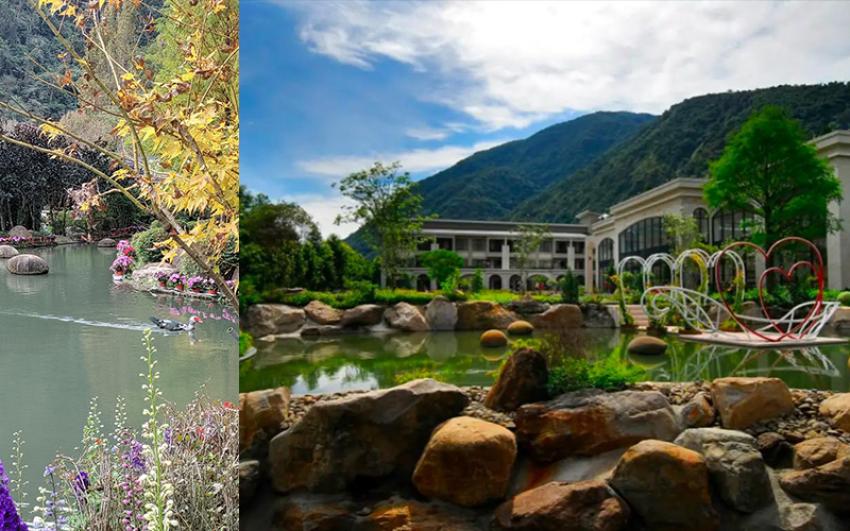 Tai-Yi Red Maple Resort, the four-star hotel with flowers and natural SPA,is located in NanTu County.
Tai-Yi Red Maple Resort, the four-star hotel with flowers and natural SPA,is located in NanTu County.
Things only got better the next day, with photographing under cherry blossoms (very real-looking but synthetic, as it was not the season); admiring swan couples in the resort lake; passing through a heart-shaped floral archway; frolicking in the Butterfly Maze — the 13-hectare grounds of the resort have surprises around every corner. Picking up some Taiwanese wine from the farmers’ market within Tai-Yi, we waved goodbye to Nantou County, as the big city of Taipei beckoned.
High-speeding it to capital Taipei
The second-most thrilling moment on this trip — the most thrilling had to be the Sun Moon Lake cable car trip — was the Taiwan High-Speed Rail (THSR) ride from Taichung station to Taipei station.
For those of us yet to visit Japan, this would be the closest we could get to the legendary “bullet train”. While the Taiwanese queued up in neat rows for their trains, we completely gave away our status as “first-timers” by positioning ourselves near the edge of the platform, ready to video-capture the THSR train coming and going. And what an entrance it made! Sleek as a snake, the white-with-an-orange-stripe train pulled into the station with barely a whisper. The first one came in so fast, there was no time to even focus the camera lens. The second one now lives in our phone storage and on Instagram as a reminder of how much this tiny island has achieved.
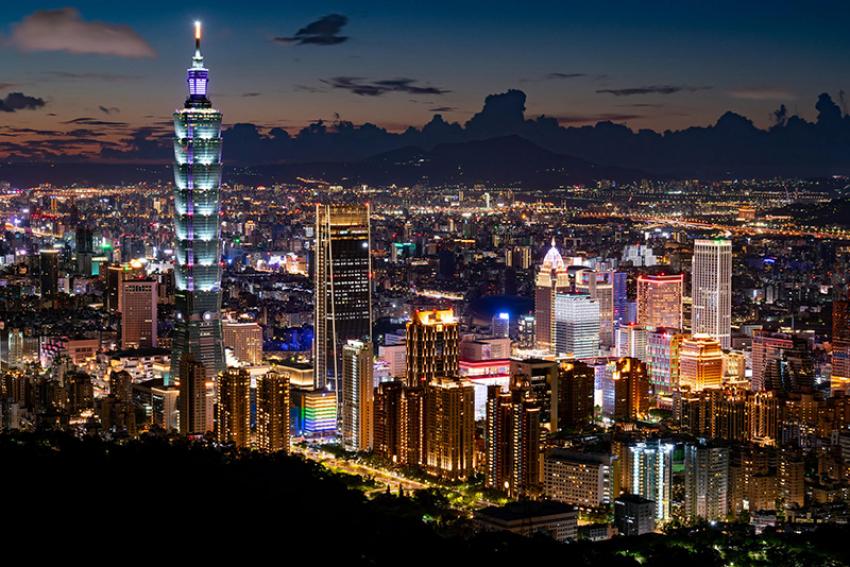 Taipei City in Taiwan. Photo courtesy: Timo Volz/Unsplash
Taipei City in Taiwan. Photo courtesy: Timo Volz/Unsplash
Seventy minutes later, after watching well-planned cityscapes zipping by on both sides of the HSR, we were in Taipei. The first impression of the city was that “it has seen life”.
Though not as gleaming and perfect as Taichung, the capital city has character, as it should, since its history goes back to the 18th century. Moreover, the relocation of tens of thousands of artefacts from Beijing to Taipei, in the wake of the 1949 civil war, has given it an unparalleled depth of heritage in Asia.
At the National Palace Museum, one of the top four or five museums in the world, we were fortunate enough to catch a special exhibition, ‘Beauty Speaks for Itself’ — even amidst this curated collection of the most incredible objects, what took our breath away was the Jadeite Cabbage, a small but stunning 19th century sculpture that represents the pinnacle of Chinese jade carving.
Later that night, while dining at the adjoining Silks Palace restaurant, we found a tiny edible version of the Jadeite Cabbage served on our plate, proof that food can be art, too.
Artistry and elegance are part of Chinese tradition, and little creative touches are evident all around the city. Our visit was just a few days before Christmas, so while Santa Claus sightings were expected, it was quite new and amusing to see him climbing walls around Taipei — yet another sign that Taiwan is open to the world, but wants to do things in its own way.
To understand post-civil war Taiwan better, one must visit the Chiang Kai-Shek Memorial Hall, a monument to the former leader of undivided China. The Change of Guard ceremony at the memorial hall’s courtyard is the highlight of a Taipei morning.
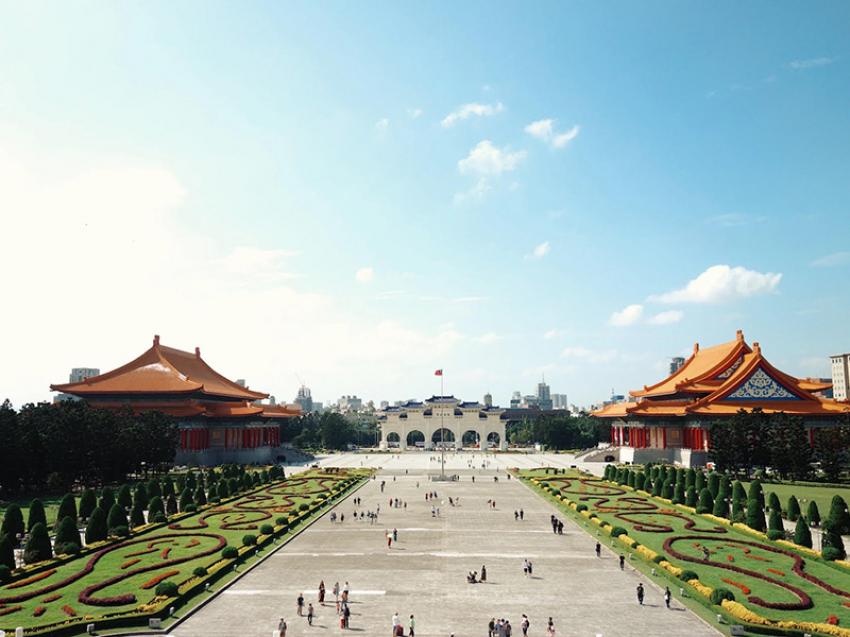 Chiang Kai-Shek Memorial Hall, Taiwan. Photo courtesy: Rovin Ferrer/Unsplash
Chiang Kai-Shek Memorial Hall, Taiwan. Photo courtesy: Rovin Ferrer/Unsplash
The dream of reunification that General Chiang Kai-shek had is still shared by some Taiwanese, though the national leadership maintains an independent course. The year 2025 marks the 50th anniversary of the general’s death, making it a landmark year for the memorial.
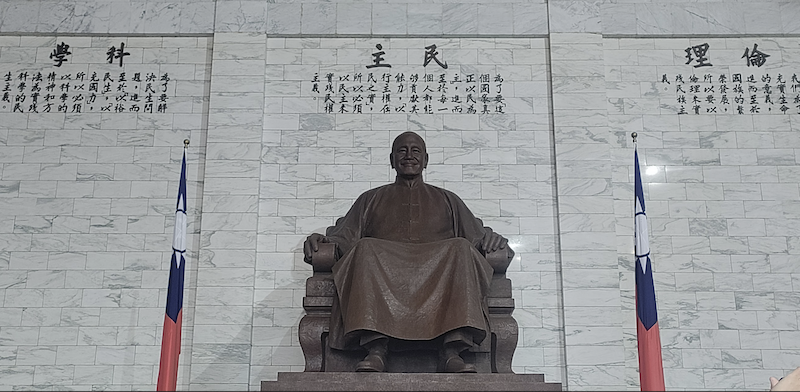
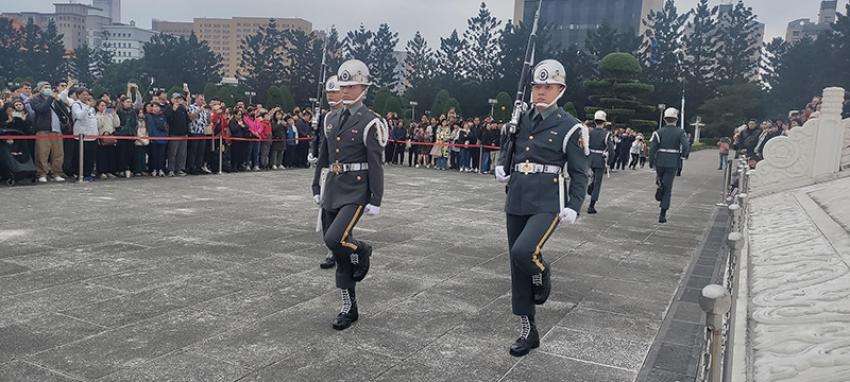 Change of guard ceremony at Chiang Kai-Shek Memorial Hall. Photo courtesy: Sanchita Guha
Change of guard ceremony at Chiang Kai-Shek Memorial Hall. Photo courtesy: Sanchita Guha
Dizzying heights at Taipei 101
Early evening in the capital on a clear day calls for a visit to the Taipei 101 tower, one of the modern architectural landmarks of Asia.
Getting to the Taipei 101 observation deck — a glass-encased floor, really — meant standing in a queue for 30 minutes and then being whisked up from the 5th floor to the 89th floor in just 37 seconds. The lift gets dark and displays the superfast climb on a digital panel set in the wall; makes it almost as exciting as reaching the deck itself.
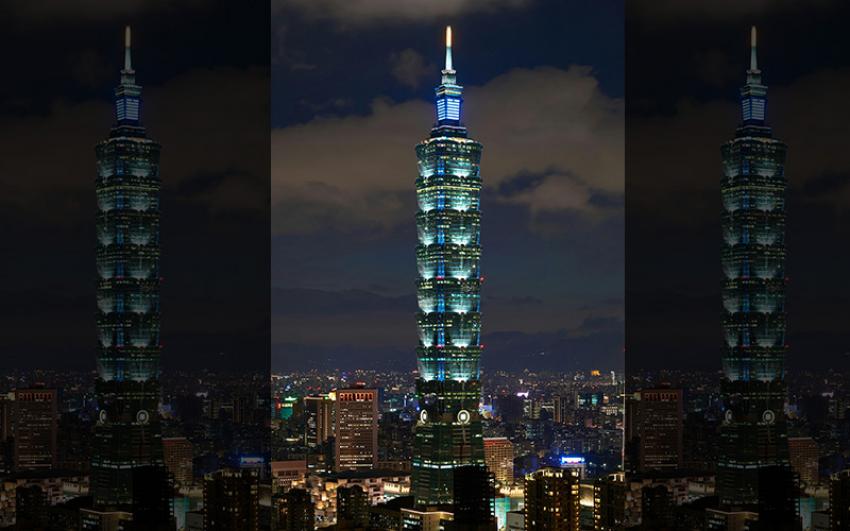 Taipei 101 at night. Photo courtesy: Timo Volz/Unsplash
Taipei 101 at night. Photo courtesy: Timo Volz/Unsplash
Once at the observation deck, a visitor ritual is sitting down on the floor with a coffee or bubble tea near the glass walls separating people from a long and fatal fall. It gives one pause to marvel at the city laid out far below and think about mortality.
Besides this viewing deck, Taipei 101 is a temple to retail, both designer and high-street, and it draws worshippers in the thousands. At the bottom of the building is an outlet of the hyper-popular dumpling-and-noodle chain Din Tai Fung, but there may be a long wait before one eats.
For something between shopping extremes and for quirkier discoveries, a better place is Rongjin Gorgeous Time, a prison-turned-creative district where a cup of artisanal coffee sits close to a cart of independently crafted jewellery, and small boutiques entice with their one-of-a-kind merchandise.
Within a few kilometres of this leisure and lifestyle street is the Indian restaurant 3 Idiots. The three large butt-shaped seats outside the door make the Bollywood-inspired naming abundantly clear. The menu is full of Indian comfort food, and the dishes are presented with flair.
Our stay at Taipei was at two very different properties, both with their USPs. Amba Taipei Songshan is a hotel that sells itself on the glittering city views visible from most of the windows. My room had such a comfy day bed sofa near the wide window —with low-flying aircraft visible at regular intervals — that lazing on it seemed like the only thing to do. Hamp Court Palace, our last stop, is like a piece of aristocratic Britain transported to Taiwan, with an ornate exterior and rooms rich in wood panels, marble walls, and chairs you can sink into.
Dropping off to sleep for one last time in Taiwan, the thought that fills one’s mind is just how much variety, both natural and manmade, such a small geographical landmass has to offer. This is followed by the next happy thought: we must return for more.
Fact file
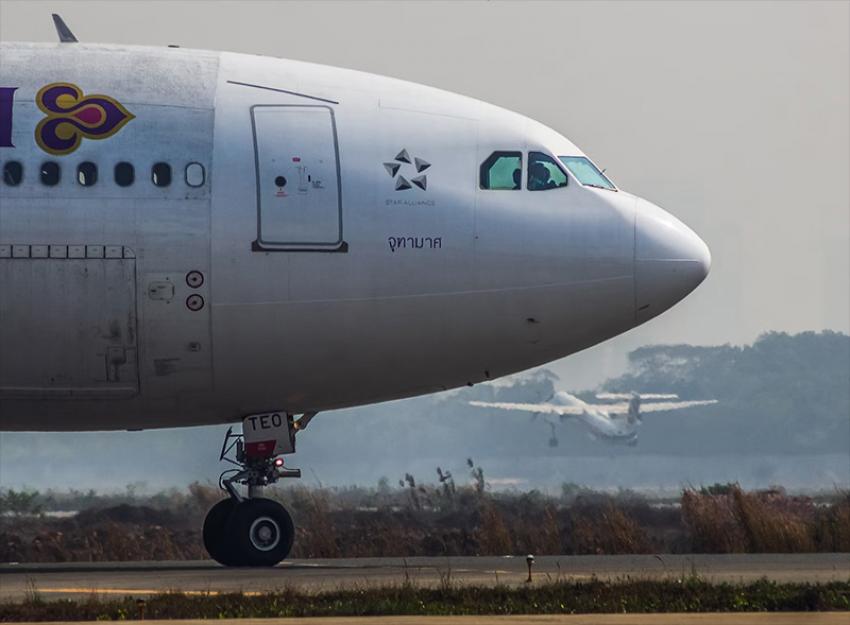 Photo Courtesy: Unsplash
Photo Courtesy: Unsplash
Flights: Thai Airways has the best connections to Taipei from Delhi, Mumbai, and Kolkata, with transit at Bangkok Suvarnabhumi. Nonstop flights between Bangkok and Taipei take just under 4 hours. The total journey time depends on the transit duration.
Singapore Airlines (SIA) and Cathay Pacific are other full-service carriers operating in this sector, though a part of the journey may be operated by SIA’s budget carrier Scoot. Other budget carriers Air Asia and Thai Viet Jet also operate some flights between Indian metro cities and Taipei.
Money: The Taiwanese currency is the New Taiwan Dollar and the current TWD to INR exchange rate is approximately 2.65. Moneychanger offices are rare in Taiwan, and banks are the most reliable place for changing USD to TWD. For Indian travellers, international debit card withdrawal gives them direct access to Taiwanese currency, bypassing the need to buy US dollars, although there is a currency conversion markup and a small ATM usage fee.
Food: There are several Indian restaurants around Taiwan; and where there are none, Taiwanese restaurants are usually able to rustle up some dishes with vegetarian ingredients. The 7-Eleven supermarket chain is everywhere in Taiwan and has an adequate selection of on-the-go meals.
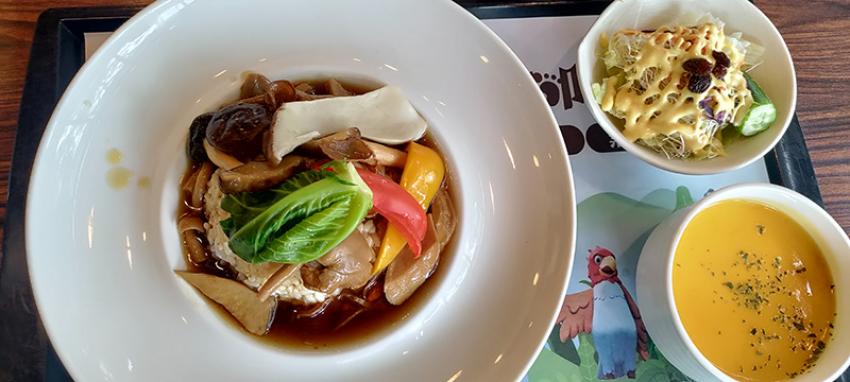
Travel: There are buses within and between cities, and taxis for a quick commute. The Taiwan EasyCard can be used on several forms of transport. Other than the single-line north-south 350km High-Speed Rail service, Taiwan has a regular railway network connecting more places.
(Images: Sanchita Guha / Wikipedia / Unsplash)
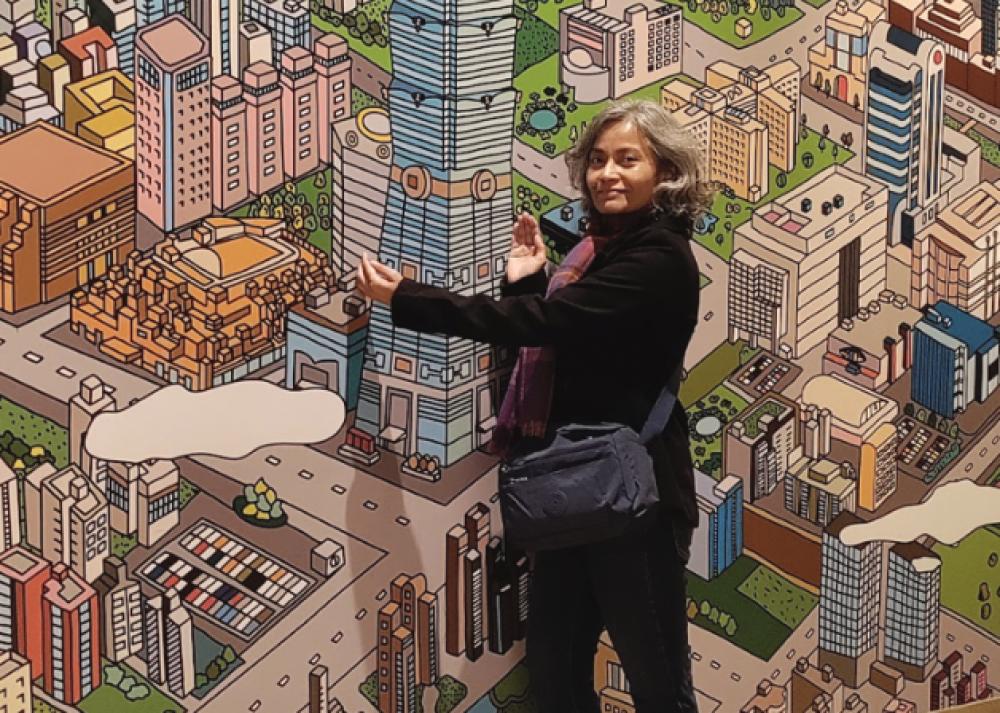
(Sanchita Guha is a senior journalist, editor and travel junkie based in India's eastern city Kolkata. She can be reached on sanchita.guha@gmail.com)
For collaborations with NITN, contact us on: notintownnews@gmail.com / +91-9830096463
- From Kennedy’s Proposal to 1850s Saloons: The Three Historic D.C. Restaurants Everyone Must Try
- This city has the best bagel in the US, and it’s not New York!
- I escaped to Pachmarhi — what I found in the queen of Satpura left me spellbound
- Air Canada just ranked the Best New Restaurants of 2025 - And the Top Spot isn't who you think
- Rediscovering Arunachal's Monpa Cuisine: One Woman’s Millet Momo Revolution
- Discovering Heritage: A visual journey through Odisha crafts museum Kalabhoomi
- From kebabs to biriyani: Lucknow gets UNESCO honour for its royal cuisine
- Delta takes Spanish flavours to the skies
- Kolkata’s iconic Kathi Roll among world’s top 10 wraps: TasteAtlas
- Yellow Taxis and the Colours of Puja
Qantas is set to open its new Auckland International Lounge on Dec 17, ahead of the peak holiday travel period, as the airline expands its trans-Tasman network. The new facility replaces the previous lounge and increases both floor area and passenger capacity.
Air Canada has introduced a new non-stop route connecting Toronto with Rio de Janeiro, with the first flight landing in the Brazilian city on Friday morning.
Air India, India’s leading global airline, and Maldivian, the national airline of the Maldives, have entered a bilateral interline partnership aimed at boosting connectivity between the two countries.

